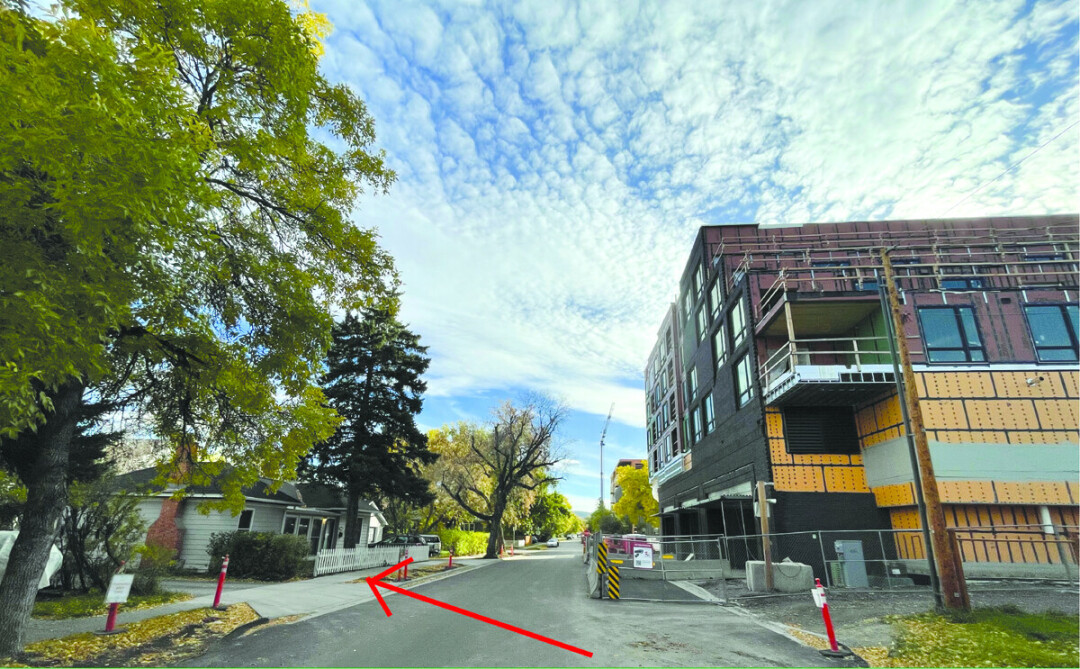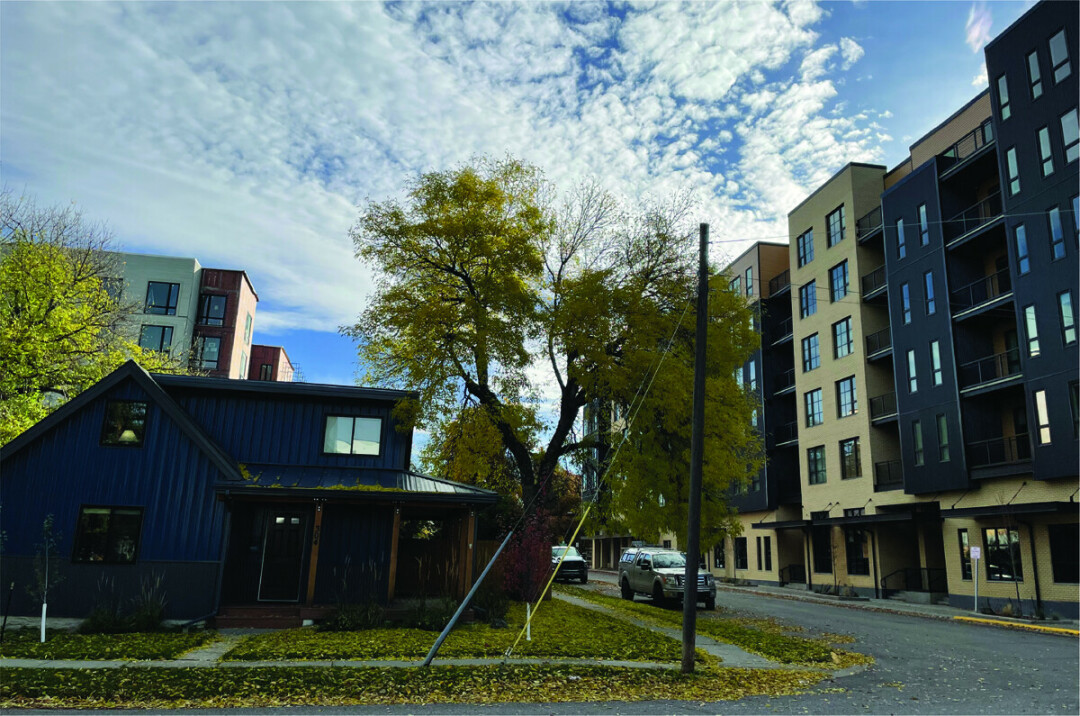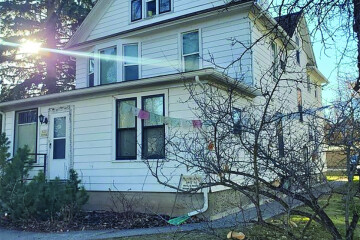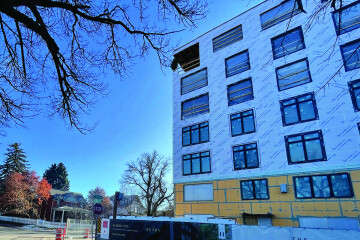What's Your Beef? Why We Need Better Zone Edge Transitions
October 14th, just a few weeks after the autumn equinox, and it’s a cool beautiful fall day in Bozeman. Our urban forest is really putting on a show right now with the leaves changing. The noise of construction equipment is an all too familiar soundtrack in town, even on a Saturday morning. But over the drone of a lift operating somewhere, I hear a couple walking down the street behind me saying, “lets cross to the sunny side, it’s cold,” so they do. It gives me pause, as I contemplate the scene in front of me. I snap a photo.
This home won’t see direct sun for the next 5 + months! The winter sun in Bozeman dips to the low angle of about 22 degrees above the horizon on the winter solstice. But that’s over 2 months away. Already this home is fully shadowed by the towering new construction. It’s across the street, but a drastic city zone away. The city code doesn’t actually require any transition measures be taken when the edge of one zone and the beginning of the next fall on the line of a street. In years past this may not have been a huge deal because Bozeman wasn’t really building tall buildings. Now with Bozeman’s recent superstar status and nationwide appeal we are facing a housing shortage. And the city’s solution to that is just build more taller buildings. They argue we need density.
I agree we can increase density, but I’m unwilling to accept ruining our neighborhoods with this kind of development that won’t actually house anyone! Even if we were able to make some of the units in a massive apartment building downtown affordable for folks who work here, we need to design our infill so that it doesn’t take away the quality of life of the existing residents, or ruin the small town charm that makes people fall in love with Bozeman.
Aside from the negative effects on human wellbeing, there are also practical impacts of no direct sun for months at a time on our infrastructure.
In a northern climate consider the following:
• snowpack on streets and sidewalks that never see the light
• effects of no direct sunlight on landscaping (established or not)
• the damage potentially caused to structures by increased ice damming -increased heating bills from a lack of solar heat gain in winter
• inability of existing solar electric or solar thermal systems to produce
We need better zone edge transition regulations across the board, but we especially need them in areas where a zone that allows taller building is located south of an existing single family neighborhood.
Other cities already do this. The Municipal Research and Services Center (MRSC) is a nonprofit based in Washington State that helps local governments serve their communities by providing legal and policy guidance. They created a document addressing zone edge transitions that advises planning bodies on methods for protecting existing neighborhoods from the impacts of new development, released in 2012, by John Owen and Rachel Miller. This graphic is from their report.
We haven’t even talked about privacy, but that is a major concern when you place a multi story building right next to a small home. Notice in this graphic the 45 degree angle from the base of the smaller home extending out to limit the building envelope. This is to make sure that the smaller home has access to sunlight for a majority of the year. They will still experience black out periods where they don’t receive direct sunlight, but it won’t be 6 months. Quality of life matters, and infrastructure matters.
Since Bozeman is currently rewriting it’s entire zoning code, and redrawing the city map accordingly, this is the perfect time to address things that haven’t been done well in the past. We need to do better going forward!
Unfortunately this little house is in the same zone as this building we all know so well. Which means it’s not really possible to enforce privacy measures or access to sun. Fortunately Black Olive is located North of several small homes so they aren’t cut off from sunlight. But they definitely don’t have any privacy in their own yards anymore.
Quality of life matters.
I think existing residents would show a lot less resistance to infill if it was done sensitively. We could keep Bozeman “the most livable place”.
Sometimes I can’t believe it still says that on the stationery.
Alison B. Sweeney is a 6th generation Bozemanite, Jeweler, Hunter, Gardener, Beekeeper, Traveler, and Neighbor, who loves History.



